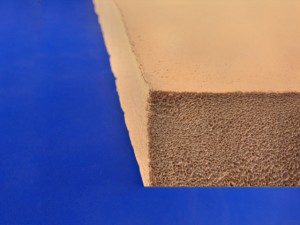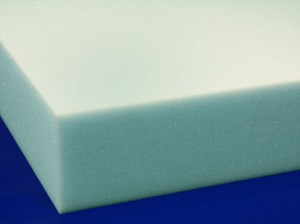With people looking for more and more ways to stay active and have fun, it only makes sense that rock climbing has become one of the fastest-growing hobbies of the last couple decades. With more people going up and down climbing walls, cliffs, and boulders, the reality is that the potential for injury is greater than ever before.

Luckily, there are ways to protect yourself and fellow climbers as you enjoy the challenge of an ascent. The most obvious is preparing yourself with practice and knowledge before moving on from one style, location, or climb difficulty. Using fall protection equipment is another basic method to keep yourself safe, and one of the most important additions to your climbing equipment is a crash pad. Made of multiple layers of foam, a bouldering crash pad softens the impact of falls and helps prevent broken bones, sprains, and bruises. Due to the prices of some of these products, some climbers look for an alternative to store-bought pads. For those who are enthusiastic about climbing but not quite as enthralled with broken bones or an empty wallet, Foam Factory, Inc. has the foam materials to help you construct your own personalized crash pad.
One of the best reasons to create your own do-it-yourself pad is the reality that climbing is not a one-size-fits-all sport. Every person has their own preferences for where they like to climb, how they climb, gear, clothing, and more. Because every climber is different, what they desire in a cushioning pad is going to be different too. Foam Factory’s inventory of open and closed-cell foam materials offer a wide selection of feels and support qualities to let you construct a crash pad to your exact needs and desires.
Crash pads are made from layers of cushioning material, utilizing both closed and open-cell foam in their construction. Both types of foam offer performance characteristics that are necessary to the overall performance of the product. By blending these traits together in one pad, a little of each type of foam creates a pad that performs better than any single material can.
The most typical design for a pad consists of a 1″ to 2″ layer of closed-cell foam, placed over a 2″, 3″, or 4″ section of shock-absorbing open-cell foam. Some designs incorporate a third, bottom layer of closed-cell foam to protect the pad against terrain and offer additional height, while also adding reversability. With multiple material options for both foam types, Foam Factory can help you make bouldering pads that are perfect for you.
The closed-cell top layer is vital because of its ability to quickly spread energy after a fall, while providing a firmer surface that lets you land on your feet with without worry. The stability of closed-cell foam is important because many falls are controlled. The firmness of the closed-cell top layer allows the user to maintain that control into their landing with a structure that is soft enough to prevent injury but firm enough to walk, stand, and land on. The most popular material for this top closed-cell layer is polyethylene foam. A resilient foam with excellent shock absorbing qualities, it can handle the impact of falls and spread the energy throughout the pad. This prevents the return of energy to the climber, as well as reducing wear on the pad in general terms, as one area isn’t absorbing all of the impact’s force. Sheets of polyethylene foam are available in solid thicknesses from 1/4″ up to 2″. Foam Factory suggests the 2.2LB density for solid performance at a great value, but they also stock high-density foam, as well as a lower 1.7LB pound density for individuals wanting different material combinations.
Underneath the top closed-cell layer is a section of open-cell foam that makes up a majority of the pad’s thickness, as well as providing the cushion that protects against higher falls. Also, where the stability of the closed-cell layer is useful for planned or controlled falls, the give that the open-cell cushion foam provides is imperative for protecting against unplanned or out of control falls where the climber may not have the ability to land how they wish. A thicker section of open-cell foam padding in the interior of your bouldering mat is what will handle hard and heavy impacts and can be the difference between waking up sore the next morning and waking up in the hospital.

Because these pads must be able to handle full body weight and repeated falls, the open-cell interior must be both firm enough to catch the climber, and hold up time after time. Using old or used foam, or foam that simply isn’t strong enough can place the user at risk of bottoming-out during a fall, which carries the same risk of not having a pad at all.
For the open-cell crash pad core, Foam Factory suggests Lux HQ foam, for its ability to stay firm under compression, while being soft enough to cushion against hard landings. With a 2.8LB density, it is our highest quality cushioning foam, able to hold up to abuse longer than lower density materials. Lux HQ is available in solid thicknesses from 1/2″ to 8″, and comes in various sheet sizes, maxing out at 82″ x 76″. It makes sense that foam that is too soft wouldn’t be as helpful protecting a fall, with it not being able to hold up against the force of a falling body. However, foam that is too firm can also be a problem, as the inability to cushion and absorb leaves the surface rigid and too much like the ground the pad should be protecting you against. Lux HQ is the right blend of resilient firmness and cushioning softness and will hold up to use and give you safer bouldering falls.
Additionally, Foam Factory also stocks Dryfast foam, which is firm enough for use and designed to drain water and resist bacterial, mold and mildew growth for use in wet areas or inside non-waterproof covers. Sheets can also be tapered or beveled to help guard against rolled ankles on angular mat edges.
Climbing and bouldering can be an exhilarating and challenging sport, but above all things, safety should be your most important consideration! To help you get the most out of your climbs, Foam Factory is here with the materials to help you create a covered foam crash pad tailored to your exact needs.
*Always check with local business and construction regulations before the purchase and installation of materials.
Note: Foam Factory, Inc. will not have any liability to anyone for incidental or consequential damages or any other liability, injury, loss or damage arising out of or related to our products, even if Foam Factory or an authorized representative of Foam Factory has been advised of the possibility of such damages.


Hi I was reading about your design of a crashpad for climbing. What ILD rating is your 2.8lb lux HQ foam ?
Hi Joe,
Thanks for the question! The ILD of our 2.8LB Lux HQ foam is 50LB ILD – this is our firmest comfort/cushioning open-cell foam. (Rebond carries a 70LB ILD but is more of a specialty material and is not suggested for this type of application.) The 1.8LB Lux Regular also has a 50LB ILD rating, but possesses a lower density.
– Foam Factory
Hi, What is the ILD for your 2.2LB Density outer polyethylene foam?
We would like to procure 10 numbers140*115*11.5 (cms) Polyethylene and Lux HQ foam.
Closed cell foams, such as the polyethylene foam, do not have ILD ratings. The PE foam uses Compressive Strength to represent firmness. Additional technical information can be found on the polyethylene foam datasheet.
thanks a lot.
Can you make a pad with only closed cell? Like 9 Inches think of mattress topper or like material?
Yes we can. The foam can be layered to meet your needs. Please contact us for more information.
Hi,
What would you recommand for a 14′-1” heigh climbing wall? It will be mostly childrens and we will use safety harness,
Thanks
Typically we suggest 2″ of 2.2LB polyethylene foam over 4″ of our firm Lux-Regular foam.
Hi there, I’m looking to replace the down in an old black diamond pad. Can you suggest which foam would be suitable for something like this http://www.blackdiamondequipment.com/en_CA/drop-zone-crash-pad-BD5508080000ALL1.html#start=1.
Thanks,
Derek
Our suggestion would be 2.2LB polyethylene foam.
I was wondering what would be best for tumbling
We would suggest only 2.2LB polyethylene foam, 2 inches thick.
I have read your blog on crash pads for climbing construction and its comments.
I have my open cell foam already from another climber who dismantled his gym. But I still need the closed cell top.
From your recommendations, the typical top is your 2.2 lb closed cell foam. However, I am concerned that this might be too firm for my application as I think it might be a lot like the top layer of commercial boulder pads which I have determined are too hard for my application.
My question is, would it be advisable and functional to use the 1.7lb closed cell in lieu of the 2.2lb for a softer feel?
To give you an idea of what we have:
Top wall height is 10′. I plan on having a 2″ layer of polystyrene on the concrete floor which I have in sheets and would remain in place. The completed mats would be placed on top of the polystyrene. The mats would be 1″ of closed cell foam(psi to be determined) over a 5-6″ layer of open cell foam which is probably in the 1.3 to 1.5 lb range. The mats would be covered with vinyl or 15 mil poly in a present wrap style. ~160sqft total.
Thanks.
For slightly more give, we would suggest our Minicel T200 foam for your application.
I have a 20 foot wall. What would you recommend? Also, how far out would you extend the foam? The belay bar is 3′ off the wall.
Typically what is used is 2″ of our 2.2LB polyethylene foam on top of 6″ of Lux-HQ foam. The foam should extend at lease 10ft from the wall.
Howdy, I’m building a bouldering cave that will have a roof that’s 7.5 feet high. What would you recommend for a crash pad?
We would recommend 1″ to 2″ of our 2.2lb Polyethylene foam as a top layer, and 4″ to 5″ of our Lux-HQ foam as a base layer.
Whats the best way to bond the 2 types of foam together . Any good suggestions for cutting the foam
The best adhesive for bonding these two foams together is our 3M Super 77 spray adhesive. To cut the foam, we recommend a sharp serrated knife or an electric meat carving knife.
I work in a theater and I need to make a crash pad for a fall from a 7′ platform. The actor is 6′ and falling back first. How thick do you recommend the padding be and what foam do you recommend?
Please Contact Usfor further information regarding your application.